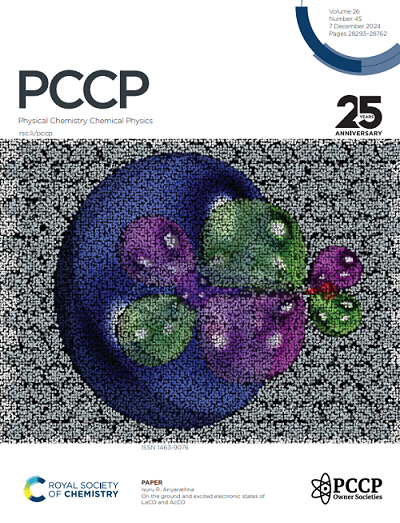Enhanced transdermal permeation of caffeine through skin model using electric field-induced lipid vesicles: a novel approach for drug transport
IF 2.9
3区 化学
Q3 CHEMISTRY, PHYSICAL
引用次数: 0
Abstract
Caffeine is a highly beneficial compound for human health, known for its anticancer, anti-inflammatory, and antioxidant properties, particularly in protecting the skin from UVB radiation damage. Although caffeine shows excellent potential for transdermal delivery, its hydrophilic nature often requires a chemical enhancer for effective transport. Traditional methods like iontophoresis and electroporation utilize external electric fields to create micro-pores in the skin, enhancing the delivery of hydrophilic molecules. While electroporation is well understood, the molecular mechanisms of iontophoresis are unclear. This investigation presents an innovative mechanism for caffeine transport from an aqueous solution without chemical enhancers using lipid vesicles generated by external electric fields. To investigate the caffeine transdermal transport process, we combined our iontophoresis methodology with molecular dynamics simulations using Gromacs and the Martini force field alongside a practical custom experiment. Our approach employed a constant electric field of 22-25 mV/nm, successfully generating lipid vesicles that transport caffeine molecules. Notably, alternating electric fields at 306 K (physiological skin temperature) increased caffeine transport by 20\%, and at 323 K, we achieved an impressive 300\% increase compared to scenarios without electric fields. Our homemade Franz cell setup showed a permeation rate dependent on the electric field correlated with vesicle formation. Additionally, hyperspectral Raman mapping identified unsaturated carbon and C-N groups as key contributors to vesicle and pore instability. This groundbreaking approach offers significant potential for enhancing transdermal drug delivery systems.求助全文
约1分钟内获得全文
求助全文
来源期刊

Physical Chemistry Chemical Physics
化学-物理:原子、分子和化学物理
CiteScore
5.50
自引率
9.10%
发文量
2675
审稿时长
2.0 months
期刊介绍:
Physical Chemistry Chemical Physics (PCCP) is an international journal co-owned by 19 physical chemistry and physics societies from around the world. This journal publishes original, cutting-edge research in physical chemistry, chemical physics and biophysical chemistry. To be suitable for publication in PCCP, articles must include significant innovation and/or insight into physical chemistry; this is the most important criterion that reviewers and Editors will judge against when evaluating submissions.
The journal has a broad scope and welcomes contributions spanning experiment, theory, computation and data science. Topical coverage includes spectroscopy, dynamics, kinetics, statistical mechanics, thermodynamics, electrochemistry, catalysis, surface science, quantum mechanics, quantum computing and machine learning. Interdisciplinary research areas such as polymers and soft matter, materials, nanoscience, energy, surfaces/interfaces, and biophysical chemistry are welcomed if they demonstrate significant innovation and/or insight into physical chemistry. Joined experimental/theoretical studies are particularly appreciated when complementary and based on up-to-date approaches.
 求助内容:
求助内容: 应助结果提醒方式:
应助结果提醒方式:


